How to Get Rid Of Muscle Soreness After Workout
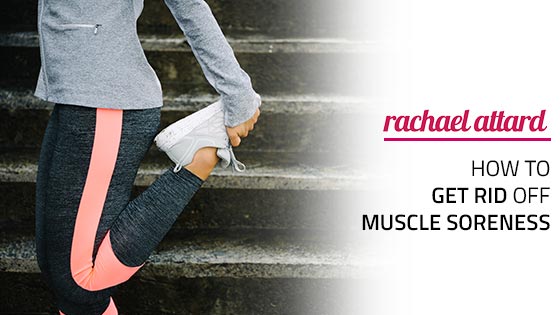
Yesterday you had an amazing workout session! You felt motivated and great afterwards. But today, you ache all over.
Your muscles are sore, you find it hard to get out of your chair, to go up or down the stairs, and just thinking about your next workout makes you cringe. Believe it or not, muscle soreness is completely normal, even if you’ve been working out for years!
No matter how long you’ve been working out, getting rid of that muscle soreness quickly is probably the first thing on your mind. I know it is for me. I mean, workouts should leave you feeling great even the day after.
Luckily, there are a few things you can do to get through the soreness more quickly. Before we look at some helpful tips, let’s answer one of the most common questions I get asked on Insta: are sore muscles a good sign?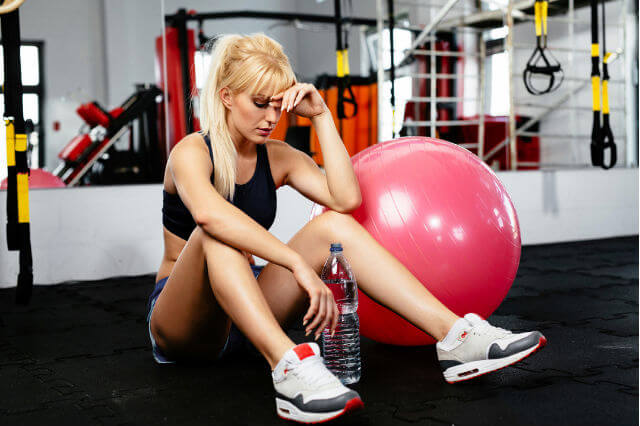
Is Post-Workout Muscle Soreness Normal?
Sore muscles are normal. When you workout, small tears occur in your muscles. These tears are repaired and this is how your muscles become bigger and stronger. This tear/repair process is what causes that soreness you get after exercise.
But, just because they’re a normal and healthy part of your workout, does that mean you should judge the quality of your exercise routine based on how sore you are? Sometimes yes, sometimes no.
Sore muscles are a sign that you have worked your body in a way that challenged it. You might feel sore the next day, and this is totally fine. If you feel sore in a certain area, it means you have worked this muscle.
You might not feel sore until the following day. This is called delayed onset muscle soreness (also known as DOMS) and is an indicator that you have worked super hard!
But you might not feel sore at all. This doesn’t mean that you haven’t worked your body. Lighter workouts such as Pilates and Yoga are both amazing for your body and can help build lean muscle, but they don’t necessarily give you that super sore feeling that you get after lifting weights.
The important thing to remember is that it’s okay to be sore, whether it’s immediately after your workout or two days after. But being sore can be a pain! So let’s talk about how to help your muscles recover.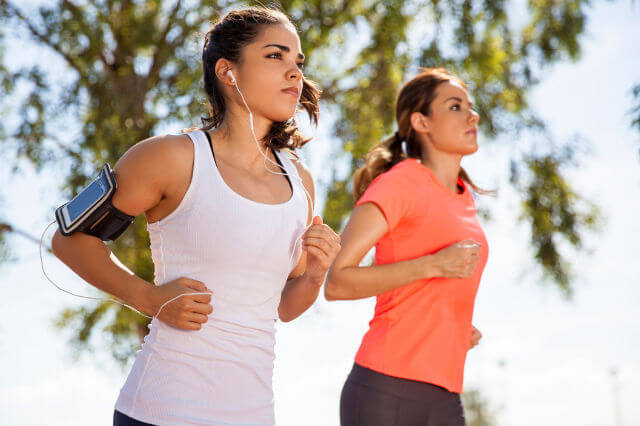
Let’s Talk About Muscle Recovery
After an intense workout, like this full body HIIT routine, your muscles will need to recover. Waiting for a few days for the soreness to fade will allow your muscles to recover, but there are ways you can recover more quickly.
Here are a few easy ways to speed up your muscle recovery so you can get right back to work and maintain your progress.
Make Use of Foam Rollers
Foam rollers are a great way to help you relieve muscle tension and soreness both after workouts and whenever the urge strikes. These rollers are made out of an incredibly high-density foam that won’t crush under your weight.
By rolling your muscles along the foam, you’re essentially giving those sore muscles a massage. The easiest way to get started is to lay on the floor and put the roller between the floor and the tight muscles in question.
Then, gently use the roller and your body weight to press against the tight areas. Once you have the right amount of pressure against the roller, roll back and forth over the sore area. If it feels painful, use your arms to support more of your body weight.
This will help loosen up knots, release tension, and improve blood flow to help your muscles recover more quickly. Unlike standard massages, you’re free to do this whenever the urge strikes, and you control the amount of pressure digging into those knots.
If you have the time and want to pamper yourself even more, consider booking a weekly massage with a professional. They understand how to help keep your muscles relaxed and flexible which only helps you recover faster after a workout and reduces muscle soreness each time.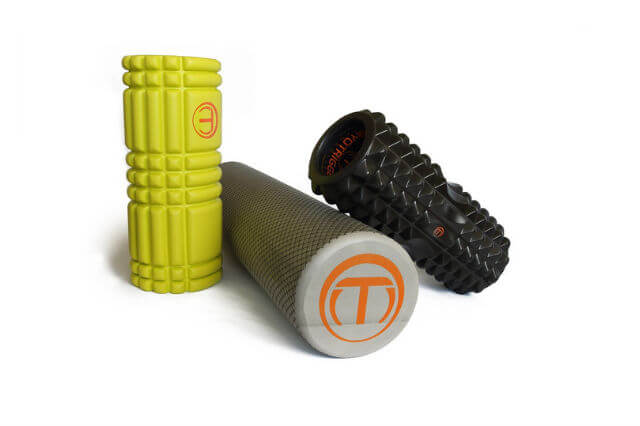
Eat the Right Food
Eating right does more than just help you lose weight—it helps your muscles recover quickly. This means less time being sore and more time being excited and ready to enjoy your workout. For most people, this means incorporating more high-protein foods into their diet.
I know…you’re thinking, “why would I want to add protein to my diet when it’ll just make me bulk up?” Believe it or not, it’s not the food that makes you bulk up—it’s the tearing of the muscles which happens during your workout. Protein just helps your muscles repair (which they would have to do after your workout anyway).
Regardless of your goals, you still need to give your body the fuel it needs to repair the tears. High-protein foods help your muscles repair more quickly which allows you to get back to normal faster. Incorporate lean meats (chicken, turkey, beef), fish, eggs, legumes, and nuts into your diet. These foods will give you the fuel you need to recover faster.
Take a Break
I used to think that I’d see more progress if I worked out every day. But it turns out that your body really does need a break, especially if you’re sore.
I’m not saying that you should take several days off between your workouts or use the soreness as an excuse to catch up on your favourite TV show. Instead, I find that active recovery is far better and helps me recover faster.
Active recovery means moving to keep your muscles limber and work out the soreness. Instead of sitting still, take a walk, go for a swim, or stretch. Just take it easy, move gently, and let your muscles work the knots out through movement. For more ideas of how to enjoy your recovery days, check out this post.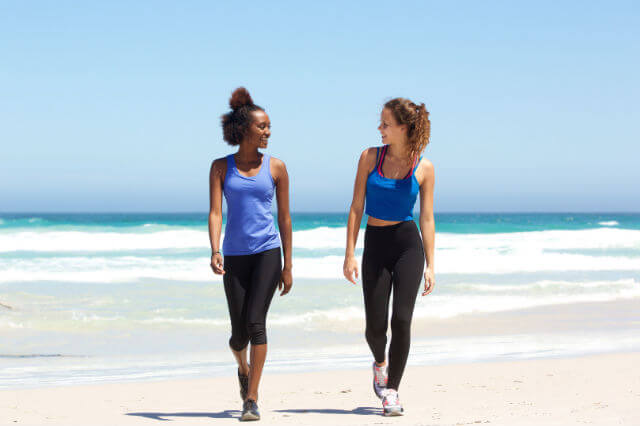
Ice the Pain Away
After a really long workout, your muscles can experience a bit of inflammation. This is normal, especially if you’ve pushed yourself a bit harder than you have in the past. Inflammation can make muscle soreness worse and even reduce the speed of your sore muscle recovery.
The best thing you can do is get rid of that inflammation. Grab an ice pack, or some loose ice cubes and wrap them in a towel. Then, rest the wrapped ice on the sore point. You can also wrap a bag of frozen peas in a towel if the soreness is widespread—the peas can cover the bulk of the sore area completely, curving with your muscles.
Just make sure to ice the area for no more than 20 minutes at a time and avoid icing the area the day after the workout.
RELATED POST: TOP 3 MISTAKES YOU’RE MAKING
Use Heat Therapy
If you’re still sore the day after your workout, skip the ice and use a heat pack.
Heating pads, hot water bottles, and even a hot soak in the tub can help your muscles relax and alleviate muscle soreness and pain.
For most people, using a heat pack for 15 to 20 minutes several times a day is enough to help relieve muscle soreness and speed recovery.
Take Magnesium
Magnesium may help with muscle soreness. Magnesium (and calcium) play a part in the contraction and relaxation of your muscles. Plus it has a huge range of other health benefits too!
You can take magnesium as an oral supplement, or you can use a magnesium spray and apply it directly to the sore muscles. Another great way to get magnesium is through an epsom salt bath or just taking a swim in the ocean! Our oceans are the best way to get magnesium (if you live by the beach of course).
Skip the Painkillers
Sore muscles can feel a lot like pain, especially when the ache is persistent. While it may be tempting to reach for a painkiller like ibuprofen or other NSAID capsule, try to resist. Most often, the above methods are more than enough to help you get through the sore and stiff period quickly.
If you injure yourself or have inflammation, ibuprofen and painkillers can help to get rid of the inflammation. However, you should be cautious about taking it frequently. Always be sure to follow the directions on the bottle and avoid exceeding the recommended dosage amounts without talking to your doctor.
Remember, muscle soreness is normal, but it shouldn’t be overwhelming. These tips should help you get rid of soreness and be ready for your next workout in no time. If you have any other tips, let us know in the comments below!

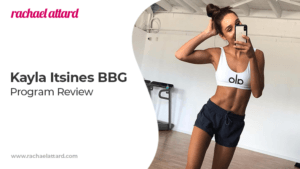
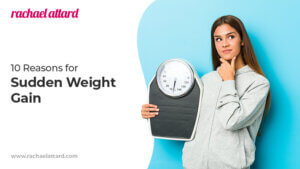
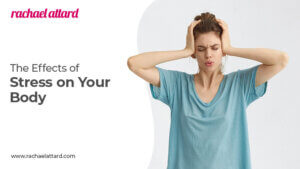


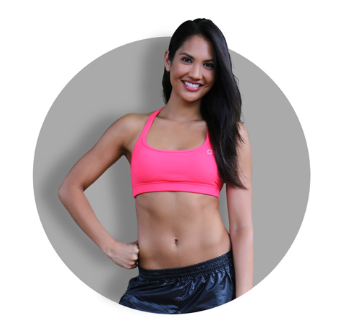
Does muscle soreness mean you’re bulking up and getting bigger muscles? ??
Thank you xxx
Hi lovely,
This is not always the case. Working out creates tears in muscles so they feel sore during the recovery phase. If you’re avoiding muscle building workouts (e.g. crossfit or heavy weight lifting), eating at a calorie deficit and doing cardio and light resistance workouts, you will have some muscle definition but still keep looking lean and not bulky! xx
Love,
Diana
Okay great, thank you!
I was just sore from the resistance workouts in the program. And what exactly is calorie deficit eating? Do you have a page on it? Thank you so much xxx
You’re so welcome hun!
When you’re trying to lose weight you should aim to burn more calories than you eat. Usually for fat loss, you should be in a calorie deficit of around 200-500 calories. A more severe calorie restriction will result in a more severe fat loss (which we don’t recommend).
Please have a read of this blog post for more tips on how to calculate your ideal calorie intake.
Love,
Diana
xx
Perfect thank you! I have sorted all of that out but how exactly do I know how many calories I am eating? Especially if there is no label on the food? Sorry for asking so many questions!! Xxx you’re a great help!
I’m happy to help lovely! :)
The best way to track your calories is to use an app like Health, MyFitnessPal or Cronometer! xx
Love,
Diana